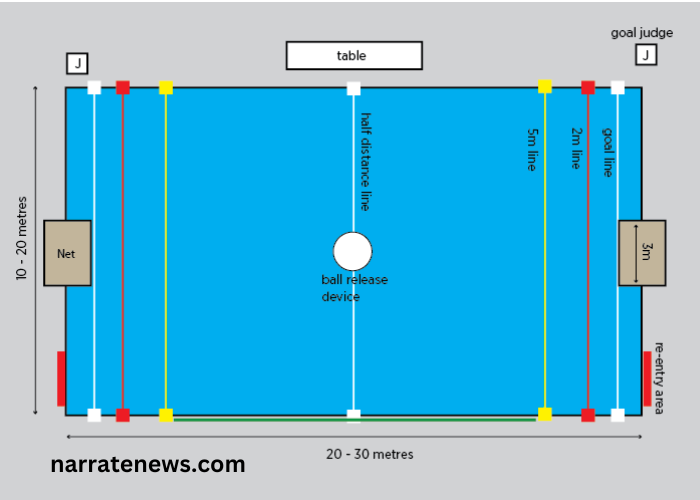
Exploring the Grandeur: The Dimensions of Polo Grounds
Polo, often referred to as the “Sport of Kings,” is a dynamic and exhilarating equestrian pursuit that has captivated enthusiasts for centuries. Central to the sport is the polo ground, a meticulously designed arena that serves as the stage for the thundering hooves, skilled riders, and the balletic interaction between horse and mallet. In this comprehensive exploration, we delve into the dimensions of polo grounds, unraveling the intricacies that contribute to the beauty and precision of this timeless sport.
Dimensions of Polo Grounds
Historical Context: The Evolution of Polo Grounds
Polo, with its origins dating back to ancient Persia, has a rich and storied history. As the sport spread across cultures and continents, so too did the need for purpose-built arenas that could accommodate the unique dynamics of polo matches. The development of polo grounds evolved in tandem with the refinement of rules, equipment, and horsemanship.
In the modern era, polo grounds have become standardized to ensure a level playing field and a fair competition. The dimensions, layout, and surface quality are carefully considered to provide optimal conditions for players and their equine partners.
Dimensions of a Polo Field
The dimensions of a polo field are governed by international regulations set by the sport’s governing bodies, such as the Federation of International Polo (FIP) and the United States Polo Association (USPA). These regulations ensure consistency and fairness in the sport, regardless of the location or level of play.
Field Size:
A standard polo field is rectangular, with a length of 300 yards (approximately 274 meters) and a width of 160 yards (approximately 146 meters). The expansive dimensions of the field allow for the incredible speed and agility displayed by both horses and players.
Goal Posts:
Positioned at the center of each end line, the goal posts are vital elements of the polo field. The distance between the goal posts is typically eight yards (approximately 7.3 meters). The height of the goal posts is traditionally set at 10 feet (approximately 3 meters).
Field Layout:
The field is divided into two halves by a center line, running parallel to the length of the field. The midfield line, perpendicular to the center line, divides the field into four quarters. These lines serve as reference points for players during the game.
Boards and Out-of-Bounds Lines:
Polo fields are enclosed by boards, commonly made of wood, to create a boundary. The boards are an essential safety feature, preventing horses from veering off the field during the fast-paced action. Out-of-bounds lines are marked to determine when the ball or players are out of play.
Considerations for Field Surface
The surface quality of a polo field is critical to the safety and performance of both horses and players. Various factors are taken into account to ensure a consistent and reliable playing surface.
Grass Type:
The choice of grass is a crucial consideration for polo fields. Common grass varieties include Bermuda grass and Argentine Bahia grass, known for their durability and ability to withstand the impact of hooves and mallets.
Field Maintenance:
Regular maintenance is essential to keep the field in optimal condition. Mowing, irrigation, and soil management contribute to a uniform and safe playing surface. Polo fields are often subjected to aeration to promote grass health and prevent compaction.
Divot Stomping:
A unique tradition in polo is the halftime divot stomping, where spectators are invited onto the field to repair divots (chunks of turf dislodged during play). This not only enhances the playing surface but also fosters a sense of community engagement.
Arena Polo:
While traditional outdoor polo is played on expansive fields, arena polo has gained popularity as a variant. Arena polo is played on a smaller field enclosed by walls, and the dimensions may vary. The surface is typically sand, offering a different set of challenges and strategies.
Strategic Considerations for Polo Ground Dimensions
The dimensions of a polo field are not arbitrary; they are meticulously designed to influence gameplay and strategy. Several strategic considerations come into play, shaping the dynamic nature of polo matches.
Field Size and Speed:
The large dimensions of a standard polo field allow for high-speed play, showcasing the agility and speed of both horses and players. The vast space compels strategic positioning, timely passes, and rapid transitions between offense and defense.
Team Dynamics:
The division of the field into four quarters and the positioning of goal posts influence team dynamics. Teams often employ strategic formations to control key areas of the field and create goal-scoring opportunities.
Use of Field Boundaries:
The boards that enclose the field serve both as a safety measure and a strategic element. Players use the boards to bounce the ball, execute maneuvers, and gain positional advantage. The out-of-bounds lines also come into play, determining when the ball is considered out and restarting play accordingly.
Goal Scoring Opportunities:
The dimensions of the goal posts influence the difficulty level of scoring. Precision and accuracy are paramount when aiming for the relatively narrow goal posts, adding an element of challenge and excitement to the game.
Adaptation to Arena Polo:
In contrast to the outdoor field, arena polo’s smaller dimensions and enclosed environment demand a different set of skills and tactics. Players must adapt to the confined space, quick rebounds off the walls, and the nuances of a sand surface.
Safety Measures and Regulations
Ensuring the safety of both players and horses is a paramount concern in polo. The dimensions and features of polo grounds are designed with safety in mind:
Boards and Safety Zones:
The boards that enclose the field act as a safety barrier, preventing horses from running off the playing surface. Safety zones, located behind the goal posts, provide additional space for players to slow down after a goal attempt.
Officials and Umpires:
Referees and umpires play a crucial role in enforcing the rules and ensuring fair play. They have the authority to stop the game in the event of a safety concern and to penalize infractions that compromise player or horse safety.
Polo Pony Welfare:
The welfare of polo ponies is a priority, and regulations are in place to protect these magnificent animals. Periodic veterinary checks, rest periods between matches, and strict guidelines for the treatment of horses contribute to their well-being.
Emergency Protocols:
Polo grounds are equipped with emergency protocols and medical facilities to address any injuries or emergencies promptly. The sport places a strong emphasis on the well-being of all participants, human and equine.
The Cultural Significance of Polo Grounds
Beyond the technical specifications and strategic considerations, polo grounds hold a cultural and social significance that adds to the allure of the sport:
Spectator Experience:
Polo matches are as much a social event as they are a sporting spectacle. The dimensions of the field provide ample space for spectators to witness the action up close, whether from the sidelines or during halftime divot stomping.
Event Atmosphere:
The vastness of polo grounds contributes to the grandeur of major polo events. International tournaments and high-profile matches often draw large crowds, creating a festive atmosphere with picnics, fashion displays, and social gatherings.
Equestrian Elegance:
Polo grounds serve as stages where the elegance of equestrianism is on full display. The synchronized movements of horse and rider, the thundering gallops, and the precision of mallet strikes create a visual spectacle that resonates with both seasoned equestrians and casual spectators.
Polo Clubs and Community:
Polo grounds are often associated with polo clubs, which serve as hubs for the polo community. These clubs, with their stables, training facilities, and social spaces, foster a sense of camaraderie among players, enthusiasts, and supporters of the sport.
Challenges and Innovations in Polo Ground Design
While the dimensions of polo grounds have been standardized to a large extent, ongoing challenges and innovations continue to shape the landscape of polo field design:
Environmental Impact:
Maintaining natural grass fields can pose environmental challenges, especially in arid or water-scarce regions. Some polo clubs are exploring alternative grass varieties or sustainable turf management practices to mitigate environmental impact.
Technological Advancements:
Technological innovations, such as drone-assisted field monitoring and precision turf management, are being explored to enhance field maintenance and ensure optimal playing conditions.
Adaptation to Urban Spaces:
Polo’s traditional association with expansive estates and rural landscapes is evolving as the sport adapts to urban settings. Smaller, adaptable polo fields are being designed to fit within urban confines, opening up new possibilities for the growth of the sport.
Innovations in Arena Polo:
Arena polo, with its smaller dimensions and distinct challenges, continues to evolve. Innovations in arena polo field design, such as advanced footing materials and customizable configurations, enhance the playing experience in enclosed spaces.
Conclusion: A Symphony of Motion and Precision
The dimensions of polo grounds represent more than just measurements on a field; they are the canvas upon which the symphony of polo unfolds. From the thunderous gallops of polo ponies to the precise strikes of mallets, every element is choreographed within the meticulously designed arena.
As we explore the grandeur of polo grounds, we witness not only a sport of kings but a timeless spectacle that transcends cultures and generations. The dimensions of polo grounds serve as a testament to the delicate balance between tradition and innovation, safety and excitement, creating an enduring legacy for the sport of polo. Whether on the expansive outdoor fields or within the confines of arena polo, the dimensions of polo grounds continue to shape the narrative of a sport that seamlessly blends athleticism, strategy, and the timeless bond between horse and rider.


